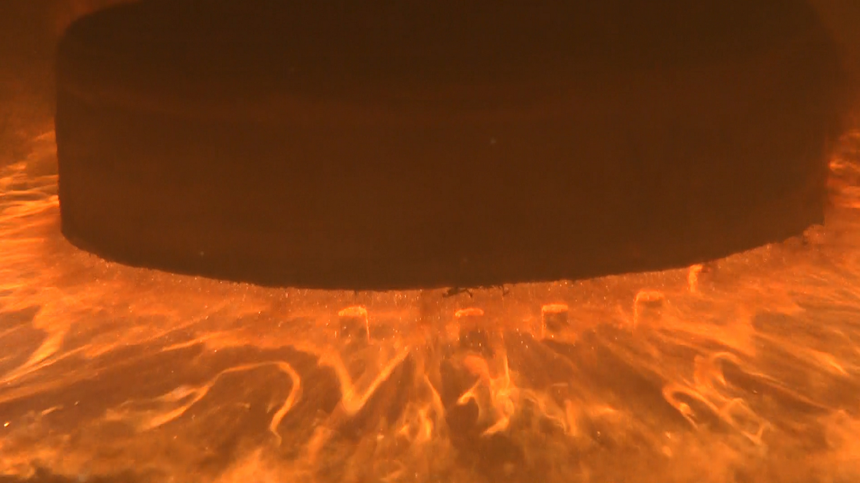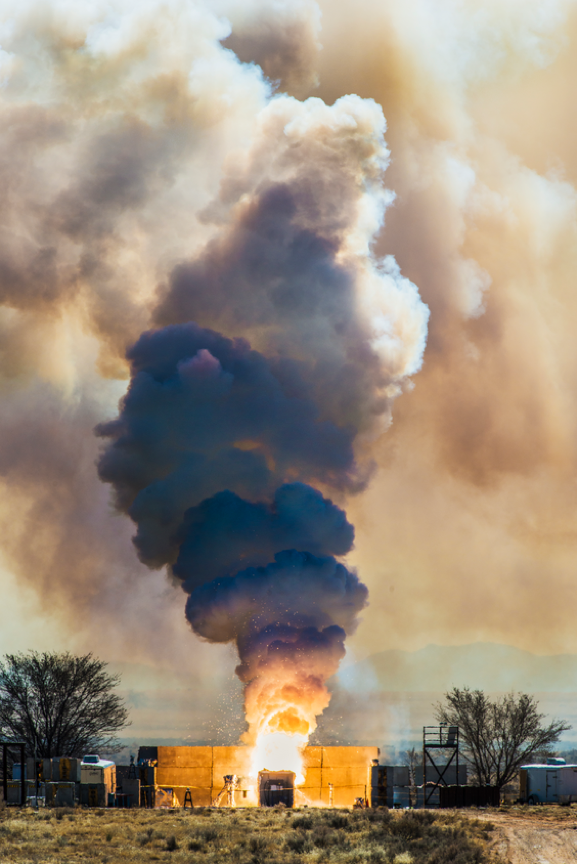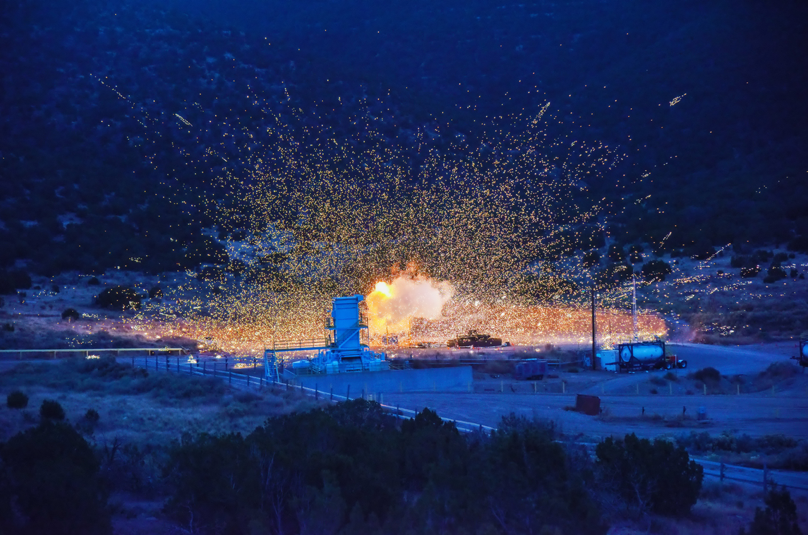Researchers at SNL are unlocking the secrets of large-scale, complex fires and developing ways to control them. Borne of a desire to characterize a weapons system’s response to such infernos, research is focusing on improving experimental methods to discover the relevant physics issues involved with fire, validating model predictions in real-world fires, and certifying system performance to fire hazards.
For large-scale test items, the use of the outdoor facilities is required. Testing in the outdoors requires coordination with Emergency Response Services, the Kirtland AFB Fire Department, and the City of Albuquerque Air Quality Board.
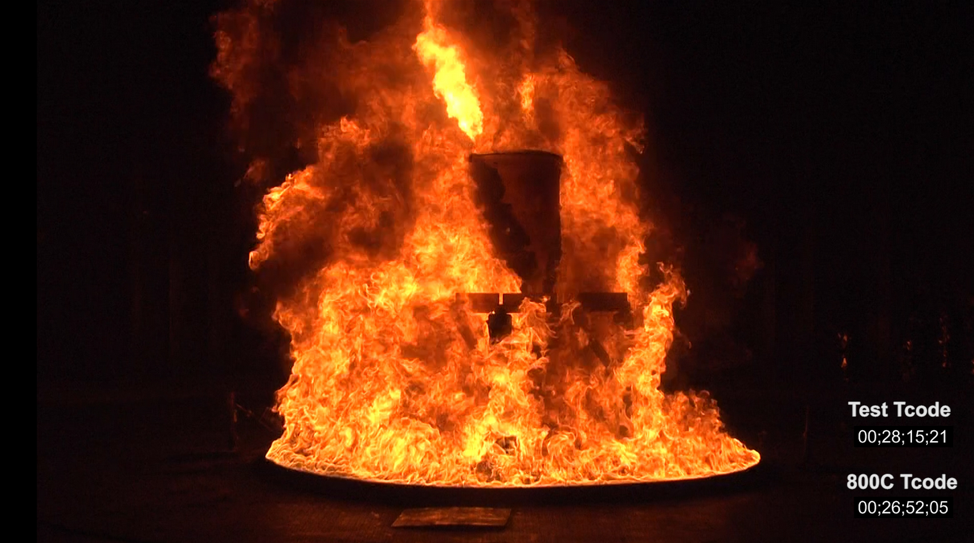
Fire temperatures range from 800-1200°C and heat fluxes from 75 to 250 kW/m2, and can be tailored to the requirements. Test units in our enclosed facilities range from cylinders 1 m high x 1 m diameter to much smaller units, 12” tall x 12” diameter. Larger units (as large as rail cars) can be tested in our outdoor fire test facility (the Lurance Canyon Burn Site).
Pool Fires
For indoor pool fires, the presence of solid walls and the careful control of the surrounding air flow provide the needed control. Pool fires are sensitive to the wind, so every effort is made to test during known, calm wind conditions, or known windy conditions of known direction. Because this is a “hit or miss” method to test, we use enclosed fire test capabilities as much as possible. We have 2 enclosed fire test facilities for pool fire testing, XTF (Crosswind Test Facility) and FLAME (Fire Laboratory for Accreditation of Modeling by Experiment). Each facility has unique capabilities. For low-wind conditions, the FLAME facility is used. Well controlled fires with little or no wind are generated in this facility. For testing under higher wind conditions, the XTF facility is more appropriate. The higher winds used in XTF generate more intense fires suitable for some customers’ needs.
FLAME
Quiescent (calm) wind fire experiments are performed in the seven-story, 60-foot diameter FLAME test cell, which has water-cooled walls and well controlled/characterized airflow equipment. Laser diagnostic equipment is used in the cell to help understand the burning process. Systems to allow jet fuel, methanol, and other liquid fuels (as well as hydrogen, methane, and other gas fuels) are part of the design. A 5.2 Megawatt (MW) radiant heat lamp array permits radiant heat tests.
XTF
XTF is a low-velocity wind tunnel about 25 ft x 25 ft x 90 ft long. The 25-ft square tunnel is capable of 5 mph maximum wind speed, whereas a smaller tunnel (12 ft x 12 ft) is capable of about 20-mph wind speed. In addition, this facility is capable of testing with explosives and other hazardous materials.
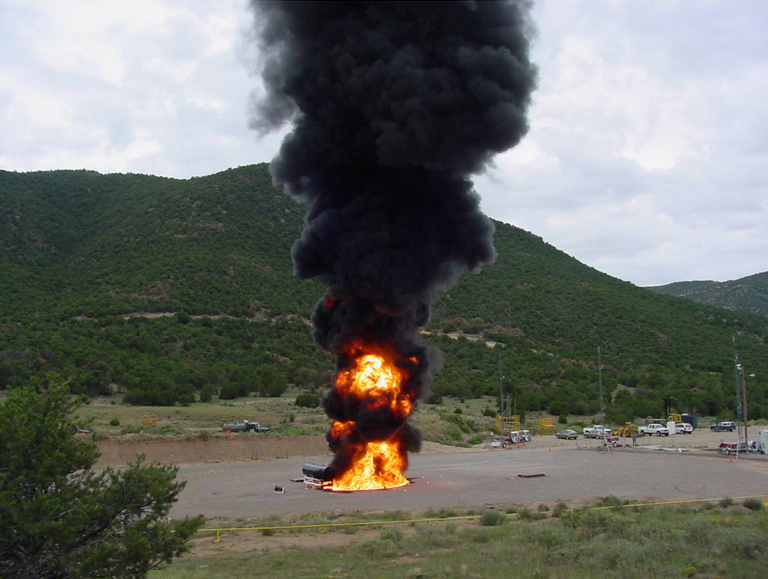
Two large-scale liquefied natural gas (LNG) tests were conducted at SNL in 2009, resulting in pool fire diameters of 21 m and 56 m. The 56-m diameter test with an average flame height of 146 m is the largest LNG pool fire performed on water or land to date. The parameters pertinent to empirical models used to calculate thermal hazard distances are the burn rate, flame height, and surface emissive power (SEP). Thus, these measurements were obtained in order to improve the accuracy of thermal hazard evaluations.
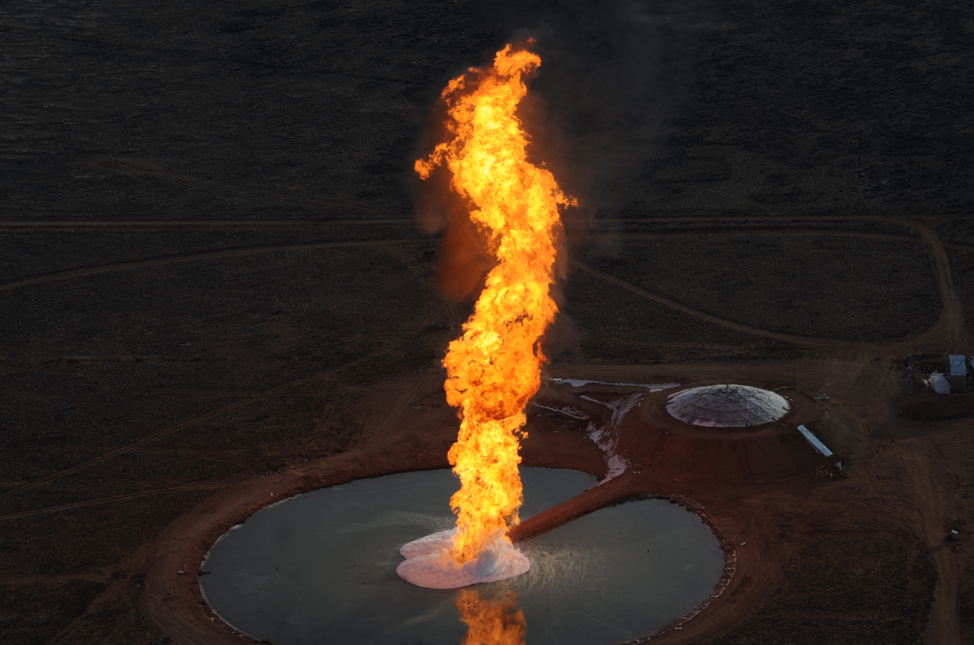
Several open pools are available, and virtually any size can be readily fabricated. The largest pool is 10×20 meters. Its size can be reduced to any convenient dimension. The other two pools are 6 meters square by 5 meters in diameter.
Rocket Propellant Testing
The thermal environment in a solid fuel rocket propellant fire has been and still is under detailed study at the TTC. Intermediate-scale and full-scale experiments at our facilities support small-scale laboratory experiments conducted at SNL, and outside the labs.
Explosive Fireball
Combinations of explosives with fuel fires are a regular occurrence at the Lurance Canyon Burn Site.
